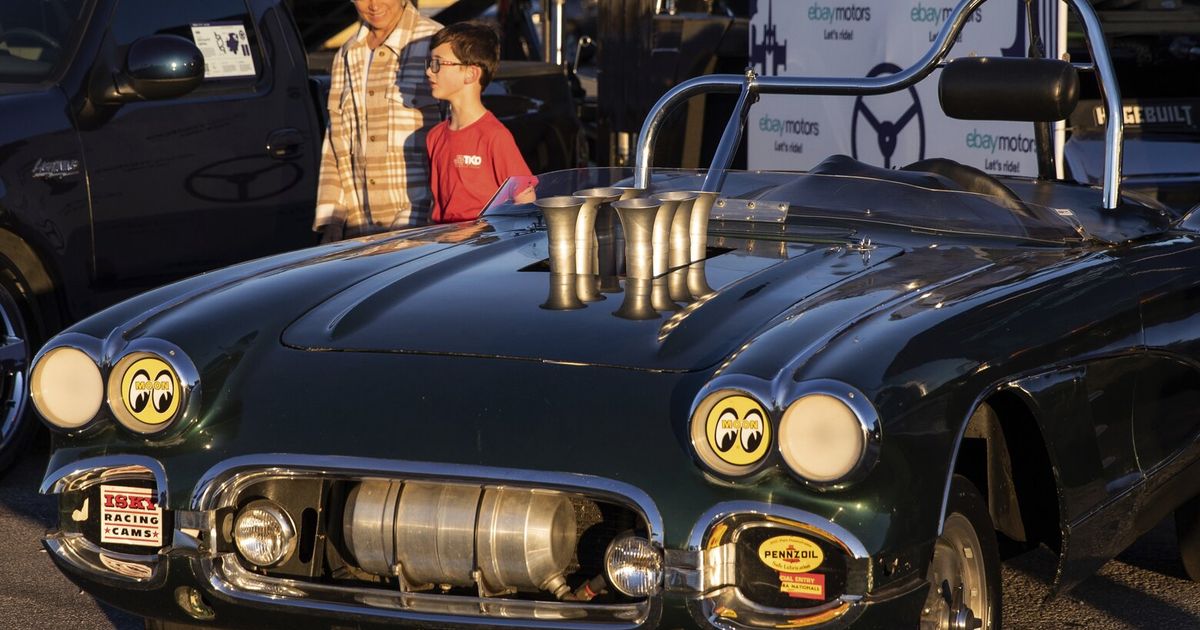
Before its debut in 1953, no one was asking for the Chevrolet Corvette. It wasn’t even really supposed to happen. A new book by Richard Prince, “Corvette 70 Years: The One and Only,” tells the story of how it did.
After World War II, General Motors was already the largest car company in the world. It churned out more than 13 million vehicles during the 1950s. They were stalwart cars and trucks that earned the GM badge a reputation for affordability and reliability. Then GM designer Harley Earl saw a bunch of sexy European sports cars racing at Watkins Glen, New York, in 1951 — and noted how lackluster his own LeSabre was in comparison. He decided GM needed a cool car, too. Even if no one wanted it.
Earl, the formidable head of GM’s Art and Color Section from its founding in 1927 until his retirement in 1958, persuaded company brass to let him design something influenced by the Cisitalia 202, the sultry Ferrari 166 MM, and the Cunningham C-1. He gave the proposed new car fully integrated fenders and a large oval grille, with recessed headlights, a wraparound windshield, and rocket-themed taillights. The fiberglass dashboard was white, with red paint on top and a red carpeted floor.
The Corvette came with windshield defroster and cigarette lighter. Best, it was sporty, with an inline-six 115-horsepower engine and a lightweight body.
Earl’s creation debuted at the Waldorf Astoria Hotel in Manhattan on Jan. 17, 1953, as the kickoff to GM’s annual Motorama car show in Manhattan. It was named after the corvette, a small, quick, nimble British warship used in World War II. The list price was just over $3,734.
Then it nearly died.
It turned out that making a car out of 62 separate fiberglass-reinforced plastic panels — bonded together with faulty seams that trap air bubbles — doesn’t make for a great body. (The war had accelerated the use and experimentation of plastics and resins for industrial uses, and Chevy was doing its part by using fiberglass, but the medium needed further refining.)
Although the Corvette had been vacuum sealed to try to trap the inevitable bubbles in the body’s resin, the panels grew brittle and cracked in embarrassing ways. The car’s polo-white color — intended to hide blemishes through fit and finish — wasn’t popular.
“In the Corvette we have built a sports car in the American tradition. It is not a racing car in the accepted sense that a European sports car is a race car. It is intended rather to satisfy the American public’s conception of beauty, comfort, and convenience, plus performance,” said GM’s rather defensive news release. Oops.
By the end of the year, GM had been able to make just 300 of its “American” not-quite-sports cars. That John Wayne had one of them, as did the dashing sailor and race car driver Briggs Cunningham and a handful of the era’s influencers, could not bring wild success.
The next year was dismal. Just 3,640 Corvettes were produced, far short of the 12,000 envisioned. Nearly a third of those made — 1,076 — went unsold.
Things changed in the late 1950s, though, when Earl and his collaborators, Ed Cole and Zora Duntov, decided the ‘Vette needed some track time. On the way to achieving class wins in the 1957 Sebring 12 Hour and in the 1960 24 Hours of Le Mans, they refined the car’s engineering and design to improve the appeal and ability of the road-going models.
In “Corvette 70,” Earl tells in minute detail how Chevy reached the heights, overcoming poor quality, lethargic performance, dimwitted marketing, and small-minded leadership to produce America’s first natural-born sports car — and how it became the longest-running model in today’s market. He chronicles how Corvette became a competitive C2 muscle car in the 1960s and a status symbol in the ’70s, as the C3. And then how it lost its way in the 1980s and ’90s but eventually modernized to make it one of the best sports car bargains available. (With a starting price of $64,500, this is a lot of car for the money.)
Prince’s book arrives on the eve of the brand’s 70th anniversary. The details in its coverage fade as the cars grow more modern after it exhaustively spans everything in the early years, but it is sure to satisfy the ‘Vette buff in your life.
At 256 pages, with 150 color and black-and-white photos compiled in partnership with the General Motors archives, the book shows the classic early models, the race cars, the concepts and limited editions such as the Mako Shark II, and the contemporary evolution of the form. It will hit bookstores Oct. 18.